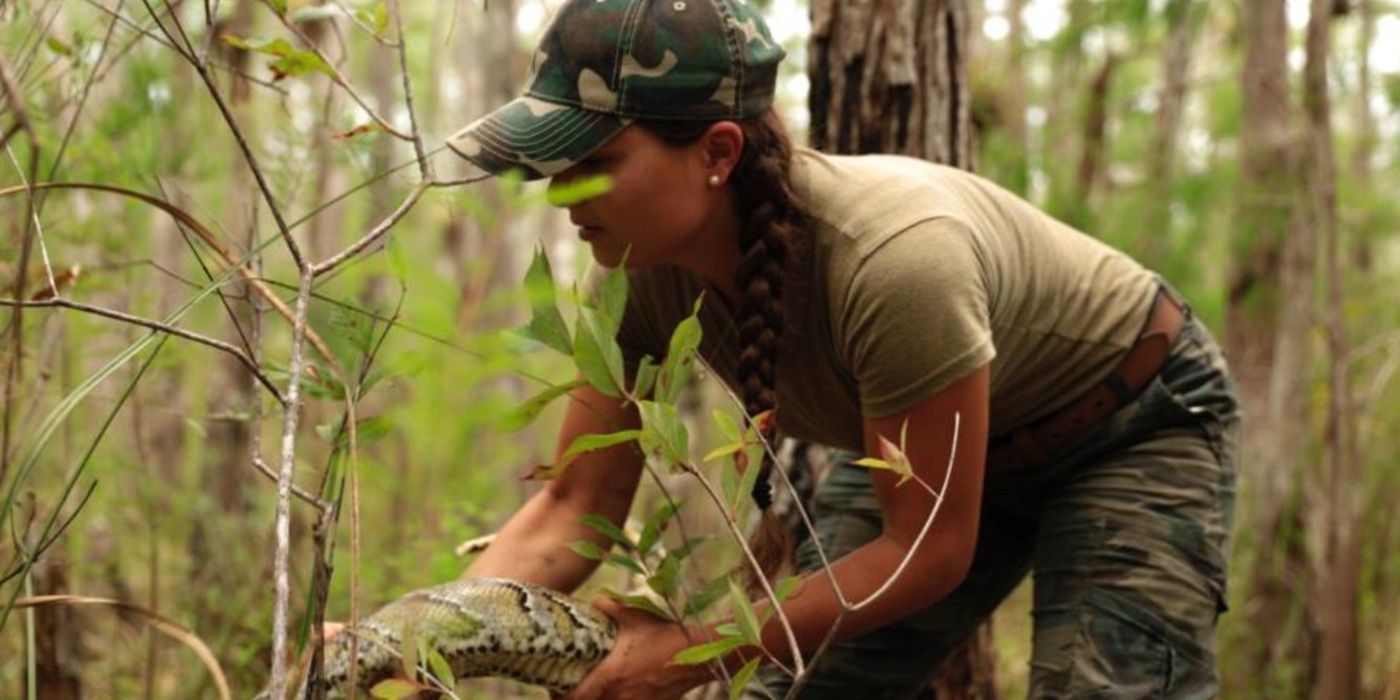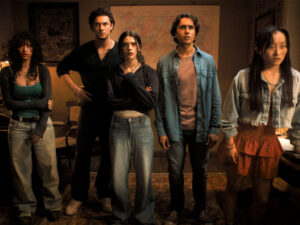Serpent Invasion’ and ‘The Python Hunt,’ the Fight for the Everglades Is Getting Ugly

While History Channel’s Swamp People: Serpent Invasion drops seasoned hunters into Florida’s Everglades for a relentless, high-octane war against invasive pythons, The Python Hunt documentary slithers down a much stranger path —attracting amateur participants in Florida’s Python Challenge — a state-endorsed contest offering cash prizes to anyone willing to trek into the swamp and bag some snakes.
Serpent Invasion is a spin-off of the long-running alligator-hunting docuseries Swamp People, and trades Louisiana bayous for Florida’s python-infested Everglades. Serpent Invasion Season 5 followed battle-hardened hunters, like Troy Landry, Pickle Wheat, Zak Catchem, Bruce Mitchell, and others, as they adapted their deep-rooted hunting skills once again to track and eliminate Burmese pythons on the side, a species devastating local ecosystems.
In a way, Serpent Invasion takes the hunt to a new level for returning fans of the original gator-hunting counterpart of the show every season. Each season raises the bar with helicopters, drones, airboats, and custom traps that turn the swamp into a cinematic battlefield, which raises the stakes and suspense.
Contrary to Xander Robin’s The Python Hunt documentary, python hunting on Serpent Invasion appears to be a full-time war. The SXSW-premiering documentary, released on March 8, 2025, frames the crisis through the lens of cultural curiosity and hunting tourism as outsider spectacle.
The doc also cobbles together a cast of quirky personalities: an elderly widow seeking closure through blood sport, a science teacher mixing drugs with snake wrangling, and a skeptical local who slowly uncovers a deeper, more complex ecological reality. It’s erratic and loose by design — less a campaign, more a carnival, and the result is closer to social commentary than a high-stakes survivalist chronicle.
One Treats the Problem and the Other Explores the Idea
The key distinction is this: Swamp People: Serpent Invasion is action-forward. Its cast doesn’t theorize or speculate. They act. Every hunt is a tactical operation — Landry even called in a friend servicing helicopters in Florida to join a python-hunting side-quest. It’s all calculated, rehearsed, and executed with urgency. There’s sweat, blood, torn skin, and high-speed boat runs. These are people who live in or near the swamps year-round. When they say “this is home,” it’s not a metaphor.
In contrast, The Python Hunt, on the other hand, stands at a distance. It treats the python crisis less as a biological emergency and more as a metaphor for invasive disruption, not just of wildlife, but of people. The documentary is rich in theme but thin in actual hunting. You don’t get a sense of systems, only slices of human behavior. It’s a valid angle — poetic, unsettling — but its subjects rarely match the competency or commitment of the Swamp People’s cast.
Where Swamp People uses sweat equity, The Python Hunt relies on observation and symbolism. It wouldn’t be entirely wrong to say that, from a viewer’s point of view, while Serpent Invasion is a strategy in motion, The Python Hunt feels more like a quirky curiosity — compelling, but not commanding.
Another Stark Difference Lies in How ‘Swamp People: Serpent Invasion’ and ‘The Python Hunt’ People Are Portrayed
Swamp People may play up southern charm and eccentricities, but the hunters are never mocked. They are respected — often revered — for their experience. Their personalities are raw but never filmed in a way that they would be reduced to joke material. Kaylyn Glenn’s quiet grit, Pickle Wheat grabbing 10-footer pythons on Landry’s cue by the neck just like that, Catchem’s methodical cool — each of the cast members adds dimension to what could have easily become a caricature if not filmed with care.
In The Python Hunt, the documentary occasionally drifts into tonal confusion. Some characters — like Anne Stratton, the “pithing” widow, or Richard Pereny, the drug-toting teacher — seem selected more for their oddities than their skill. Even when the film stumbles onto more grounded stories — like Jimbo McCartney’s investigation into Everglades’ ecological damage — it shifts too quickly to maintain their emotional or narrative weight. You’re left intrigued but unsatisfied — entertained, but not immersed as a hardened Swamp People viewer is used to.
‘The Python Hunt’ Lets the General Public Know Who Gets to Save the Everglades
Swamp People: Serpent Invasion is tight, and every episode is a mission with clear stakes. There’s usually a structure in place: territory to reclaim, competitors to outdo, and obstacles to survive. The show might add humor or heartwarming moments, but it never loses direction. The Python Hunt, on the other hand, resists resolution. It’s deliberately nonlinear, but that’s not inherently bad because it’s not meant to be linear. It was meant to raise fascinating questions about who gets to save the Everglades and why, and it does that. However, in doing so, and in comparison to Serpent Invasion, it leaves many of those threads unresolved, as you can only fit so much in a 91-minute screentime.
Ultimately, Swamp People: Serpent Invasion is a boots-on-the-ground docuseries rooted in tradition, craftsmanship, and environmental urgency, and The Python Hunt exists so the general public can understand that there’s a snake infestation damaging the local ecosystem, and it needs to be fixed — and that the state arranges this cool contest to work toward it every year. However, the documentary comes from an artistic counterpoint — a snapshot of outsiders stumbling into the swamp, sometimes with good intentions, sometimes not knowing why they’re there at all.
Swamp People: Serpent Invasion
- Release Date
-
March 12, 2020
- Network
-
History








